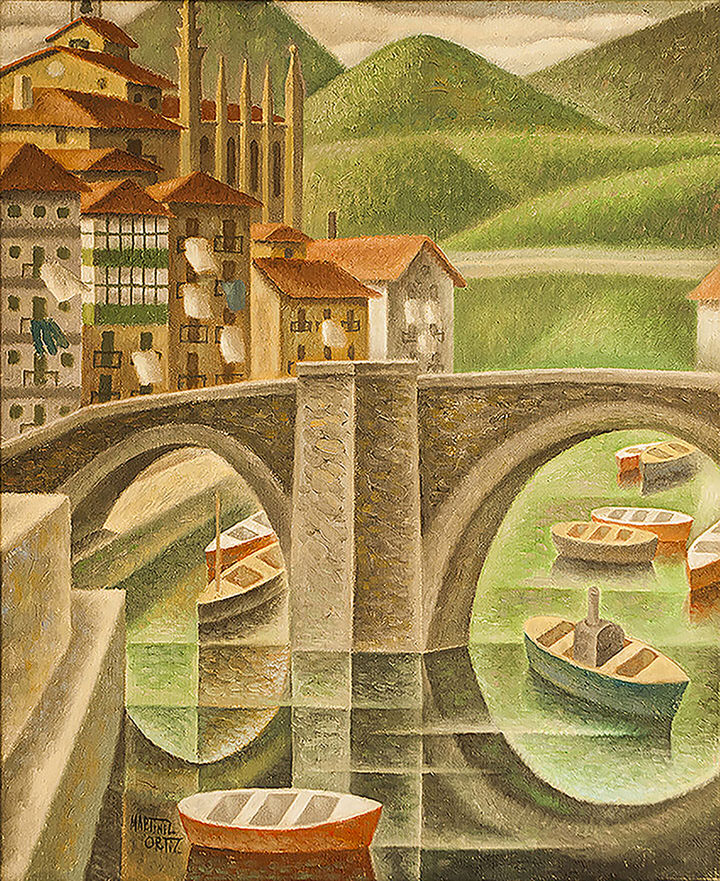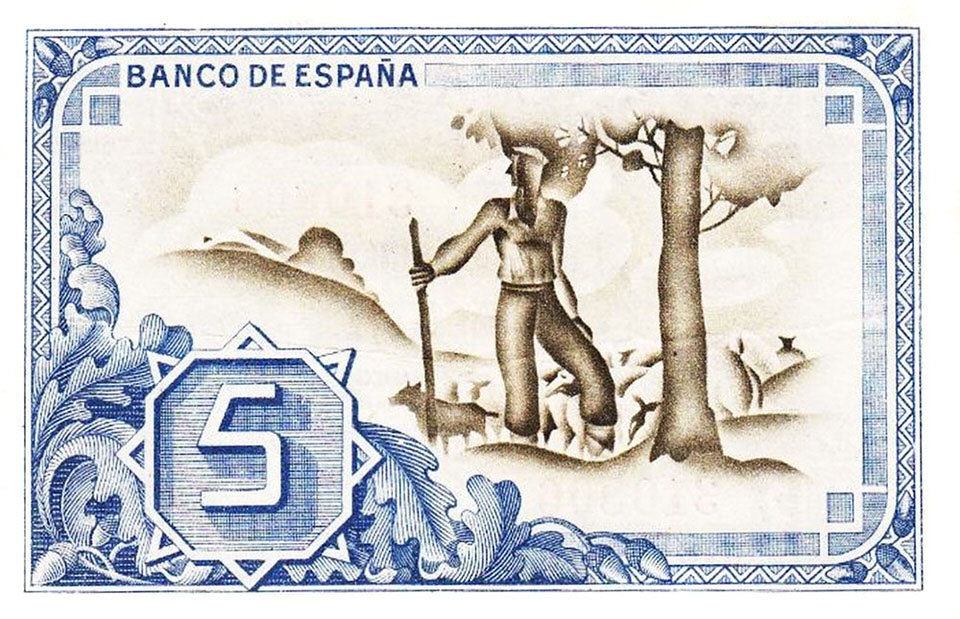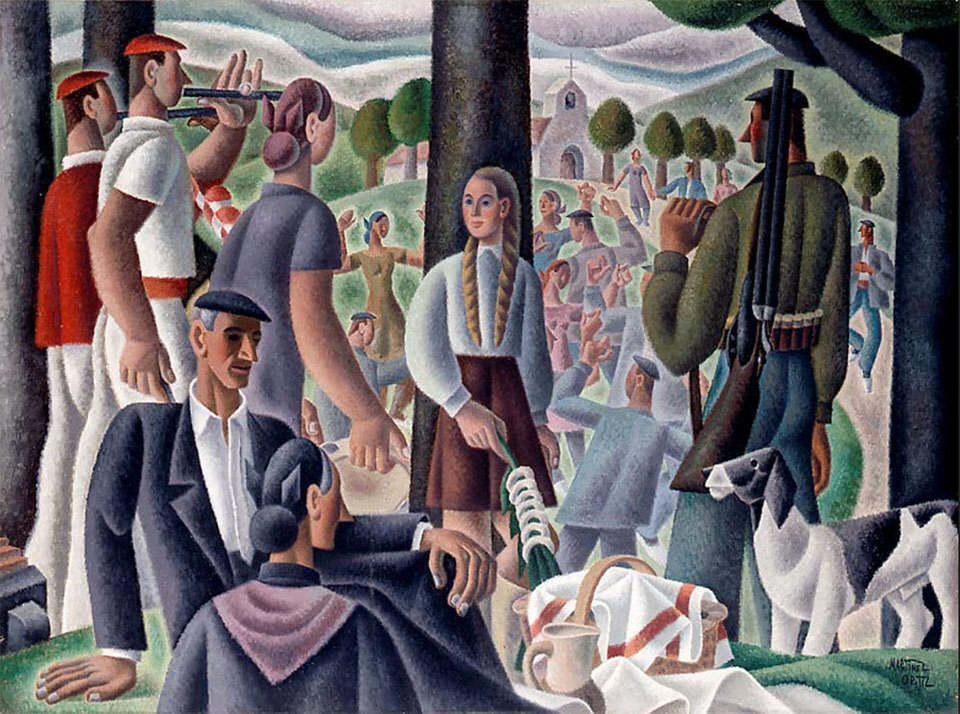Design Inspiration: The Green Chevron Stripe Sock by Fortis Green

'Bilbao Industry & Commerce Exhibition' by artist Nicolas Martinez Ortiz 1934
The Fortis Green chevron stripe pattern dress sock in Green is inspired by the Art Deco colour palette of artist Nicolás Martínez Ortiz and his 1934 poster for the Exhibition of Industry and Commerce, Bilbao.
Ortiz was born in Spain in 1907. This multi-faceted artist learned the technique of lithography in his family workshop while simultaneously undertaking academic training at the School of Arts and Crafts of Atxuri in Bilbao. Ortiz received the Salces Scholarship in 1924 to continue his studies in Paris at La Grand Chaumière art school.
His two scholarship grants, one awarded by the City Council of Bilbao and the other by the Municipal Savings Bank, allowed Ortiz to stay in Paris for four years up to1928 when in order to fulfill his compulsory military service, Ortiz returned to Spain.

Boats Of Ondarroa by Nicolas Martinez Ortiz
Nicolás Martínez Ortiz was a prolific artist renowned for his varied body of work, including oil paintings, drawings, engravings, watercolours, poster art and murals. In 1929 Ortiz completed his first major decorative mural for the Garellano barracks in Bilbao followed by a series of murals around the Spanish city in the years following including the Luciano restaurant (1930), the Militia Orphanage (1936), the Carlton Hotel and headquarters of the Altos Hornos de Vizcaya ironworks, after the Spanish Civil War ended in 1939.

Mural in the Carlton hotel, Bilbao by Nicolás Martínez Ortiz
He also illustrated a series of Spanish banknotes adorned with traditional Basque motifs, issued by the Basque government in 1937 as well as a series of Spanish themed lithograph posters for Bilbao events, exhibitions and bullfights including for city’s August 1934 Exhibition of Industry and Commerce.

Basque themed Spanish banknote designed by Nicolás Martínez Ortiz
At the end of the Civil War in 1939 Ortiz retired from political and artistic circles. In this period, he undertook more personal work – primarily painting landscapes and the people of the Basque Country in a Cubist inspired style.
His reappearance in exhibitions in the late 1960s was met with great success.
His work is represented in important collections, as well as at the Museum of Contemporary Art in Madrid, and the Bilbao Fine Arts Museum.
Nicolás Martínez Ortiz passed away in Madrid, Spain in 1991.

Romeria at the Shrine, c. 1975 by Nicolás Martínez Ortiz
